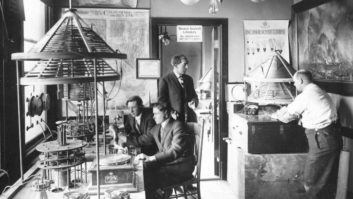Throughout my career of planning and buying advertising, I have constantly been disappointed that I cannot integrate public radio into my media mixes as well as I have wanted.

iStockphoto/Andrey Popov Meetings with stations lead to good intentions to do more with each other, but we end up doing very little if anything at all because we are so hamstrung by the various walls the stations and the medium inadvertently put up and are reticent to tear down.
This is disappointing because public radio has huge marketing potential.
The sad part is that public radio stations are unnecessarily leaving a lot of revenue on the table due simply to procedural issues, a lack of understanding of the advertising and marketing firm’s processes, requirement of large amounts of time relative to the budget, and other issues that make it difficult to work with.
Many of these issues should be easy to resolve. So here are a few suggestions.
• Standardize! It is said that each station sets its own guidelines to underwriting messages (spot length, copy guidelines, production limitations, etc.) to preserve its individual identity. However, your station’s identity comes from your programming and the makeup of the market you serve — not the underwriting messages you sell. A lack of common standards severely limits public radio’s access to regional media budgets.
• Most advertising plans allow 10–15 percent of the budget toward production of the creative and the other 85–90 percent to buying the media. Production costs for a public radio effort can be as much as 50 percent because of all the varying guidelines.
• NPR is in a position to be able to broker multi-market regional buys, but the individual stations need to be far more receptive working with other regional stations to develop consistency in production and creative guidelines.
• Keep in mind that the advertising and marketing industry represents more than 15 percent of the U.S. GDP. All public stations need to do is be more flexible, and they can tap into those funds a lot better.
• If you want more advertising agency business, you have to accept advertising agency’s creative. The agency’s responsibility is to guide and direct its brand, and it has teams that do that. It also has client authority to ensure that their message is consistent across all media in which it appears. Frankly, the agency creative teams are better than yours.
• Commercial stations are your competition. Even if you don’t see them as that way, they see you that way. If a radio sales rep meets a potential client who says they only “advertise” on “NPR,” rest assured that rep has Nielsen Audio, Scarborough, Media Audit or other data that would show the client how much better their station delivers the client’s target audience than the NPR station. Non-commercial or not, you’re just another radio station to the commercial radio community.
• Like it or not, many clients (and a lot of agency execs) see little if any difference between public and commercial radio. Your audience may know the difference, but the decision-makers who have the marketing dollars generally don’t see it, which further leads to frustration with the medium.
• Market yourselves better. Out of sight, out of mind. Your competition (see above) invests in advertising and marketing efforts to promote new programs, digital offerings, etc. They sponsor events at major trade shows like the AAAA Transformation Conference or the ANA Masters of Marketing Conference. They conduct local presentations of new programming and give advertising seminars. They invest a lot of money seeing to it that decision-makers know what they are doing. You need to as well.
• Only be non-commercial when broadcasting over the air. When you are out in the business community, you need to approach your clients as commercial entities do. If you consider yourself “above” the way commercial stations go after business, you will always be “below” your potential. You are competing with for-profit entities across all media that have highly trained sales teams, extensive marketing tools and a willingness to bend rules to make a sale. You need to be willing to have and do the same.
• If you haven’t done so already, invest in the same ratings information that the commercial stations use. Media buyers are required to quantify audiences and justify their costs based on audience delivery. Simply providing schedules that include Nielsen Audio (formerly Arbitron) ratings in a schedule similar to Tapscan could open new doors.
• Let your clients dictate the contract terms. For example, drop the “13-week minimum commitments.” Media teams think in terms of “flights.” three weeks on, two weeks off, three weeks on, etc. If you are stuck to specific term lengths, you lose opportunities.
• Figure out how to measure return on investment. Clients today want a clear and measurable accountability for their investment. The agency is held accountable to the point that compensation structures now include a performance element. If you cannot show how you will justify your costs through some form of ROI, we cannot use you.
As Walt Kelly once wrote, “We have met the enemy, and he is us.” Take a serious, constructive and critical look at yourselves and ask the question, “Are we successful because of what we do … or despite what we do?”
Evan Brown has worked for large corporate and independent advertising agencies like McCann/Jay, Momentum Worldwide, Bates USA, Doner, Fahlgren and MARC USA. He has been involved in both public and commercial radio, having worked on air, in production, advertising sales and buying both commercial and public radio for clients at the local market and at the network levels.












